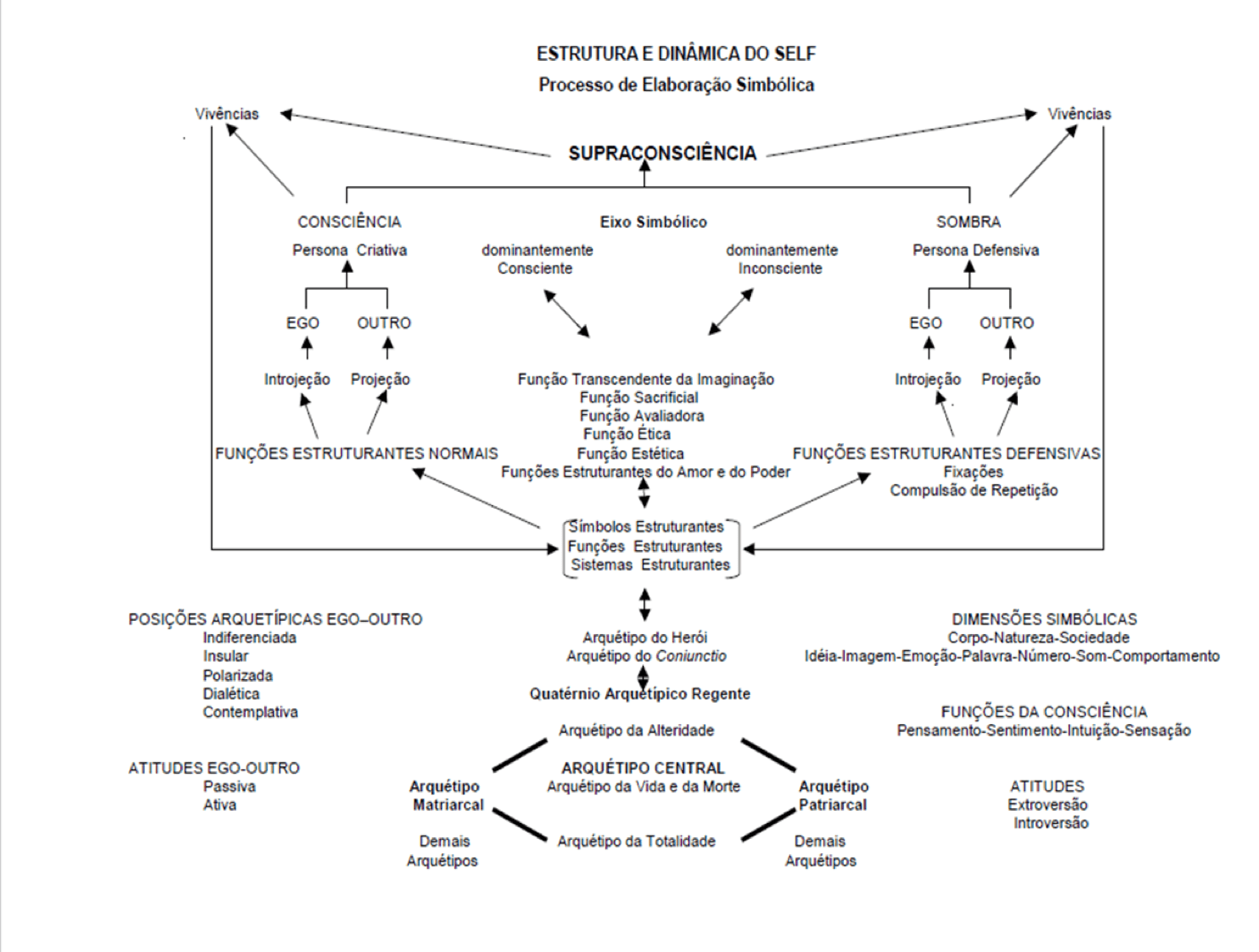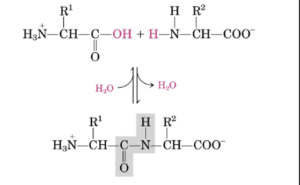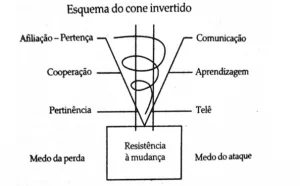SANTOS, Alan Ferreira dos [1]
SANTOS, Alan Ferreira dos – Psychopathology in Carl g. Jung: contributions of Symbolic Psychopathology – Multidisciplinary Core Scientific knowledge magazine, year 1, vol. 7, p. 77-90. August 2016. ISSN:0959-2448
SUMMARY
4 analytical psychology founded by Carl g. Jung (1875-1961) is a major scientific achievement, both at the monumental discoveries on the sphere of the unconscious, as well as his views on the pathological, nevertheless, the work we have been bequeathed was inconclusive, with some improvements on the part of the students of Jung, here in Brazil the greatest exponent of analytical psychology , made some revisions on the theoretical methodological concepts, in addition, Carlos Byington (1933-present) today with 83 years, produced from the Junguianas conceptions, a Symbolic Psychopathology, that adds new discoveries, that allow a better articulation of the analytical concepts, and consequently, helps the scientific community to think of a better diagnosis. Method: This study was produced from bibliographical material, having made a qualitative analysis of the data collected. Objectives: to define and analyse the reformulations of Psychopathology. Understand the main contributions and the continuities produced at the thought of Carl g. Jung. Conclusion: it can be concluded that the reformulations made by Symbolic Psychopathology if they gave in the sense of a deconstruction of pathologizing the psyche, these conditions, that the course of the story were set as being inherent in the human Constitution. The guise of conclusion, it can be said that the analytical psychology has its in core, a peculiar look on the human condition, leaving a vertical structure and declining in the course of time, staying in a horizontal line, aiming at a dynamic look about the biopsychosocial subject.
Keywords: Psychopathology in Carl G Jung. Analytical Psychology and psychopathology. Psychopathology.
INTRODUCTION
When working with the pathological in dimension of the psyche, Carl g. Jung (1875-1961) is located, the psychopathology as being a variant of the normal development of the archetype, according to psychiatrist diseases are disorders of normal processes, and never an entity by itself with a standalone Psychology (JUNG, 1935). However, there were some deformations throughout history, than would be normal or pathological. There are several authors have proposed debates, one of them says, that the disease would be what disturbs the normal exercise of everyday life to the occupations of the subject, making him suffer (CANGUILHEM, 1978). Others say, that the diagnosis is always somewhat more connotations, ranging from society to society (HORNEY, 1966).
The purpose of this article, is working the pathos in terms of analytical psychology, if using the reformulations that were made by the greatest exponent of the approach in Brazil Carlos Byington, according to the researcher, there have been some historical patologizaram deformations the psychic dimension normal (BYINGTON, 2006).
In this sense, there will be a route by the work of author, aiming to circumscribe the characteristics of Symbolic Psychopathology, aiming to extract the discoveries in the area and the conceptual theoretical novelties.
Without the slightest shadow of a doubt, Byington provided us with major contributions in the field of analytical psychology, with its methodological rigor has opened a vast area of know, Deconstructing revisionando concepts and historical incongruities leaving them updated.
THE COURSE OF THE STORY
Throughout history there have been several deformation with respect, it would be normal or pathological, however this may be evidenced, as a kind of archetype, that occurred historically, second Byington “Four historical deformations unduly psychic dimension patologizaram normal” (BYINGTON, 2006, p. 5).
According to the author “the first, mythical, originates in the Genesis. The expansion of consciousness of Adam and Eve is considered so bad that justifies their expulsion from paradise “(BYINGTON, 2006, p. 5).
Over the years and the advent of the French Revolution (1789) in line with the era of Enlightenment, if you install a new conception of the world, which ban the religion itself and any kind of “mysticism”, until then, we were redeeming original sin, now ban the sacred sphere:
To beat her and expel the Inquisition, at the end of the eighteenth century, science devoted to objectivity and banished the subjective and religion. He settled the subjective-objective dissociation in Western culture, origin of the nineteenth-century materialism. The subjective took with him the roles of feeling (ethics), of intuition, Introversion and emotional relationship with the universe, pejoratively associated with superstition, bigotry, fanaticism, quackery and the scientific method error (ibid., p. 6).
Then rediscover the subjective, by means of medicine “the discovery of the ordinary through the illness to date makes it difficult to realize the transition from normal to pathology (ibid., p. 6). This way Pinel and animal magnetism of Mesmer rescues subjectivity, this in turn initiated the study of subjective standard, which developed later with hypnosis in the treatment of hysterics, and:
This door Liebault and Bernheim was to get in the normal and pathological unconscious subjective dimension, closing again for the subjective unconscious normal, when Charcot ignored their work and stated at the Academy of Sciences of Paris that only hysterical patients were hypnotizable (ibid., p. 6).
And finally, the last occurs when “Freud described the formation of the Ego through the Id and reduced primary relations to the Oedipus complex, the unconscious to the unconscious repressed and the child to the perverse-Polymorph” (ibid., p. 7).
Till here decorremos on pathologizing normal throughout history, having its peak at Freud, as the last historical archetypal deformation. We spend now, pathologizing normal by psychoanalysis, as this made a revolution in human perception and the way we perceive, but also produced negative consequences for the development of own know if influenced positively, the assertive antipode is also correct, let’s see:
The great discoveries of Freud of identity formation since childhood, infantile sexuality, repressed unconscious, Oedipus complex, Ego defense mechanisms, repetition compulsion, castration complex, strength and defensive transfer would have been a quantum leap forward to describe the normal Psyche and protect it from pathologic deformation. However, to believe that the pathology discovered was normal characteristics of children, they would need the repression to sublimate and compatible with the social conviviality, psychoanalysis became exuberant source of psychological deformation by pathologizing. To denounce the puritanical Victorian sexual repression, and “discovering” the “perverse-patologizou, Polymorph the psyche, justified their repression and denied any possibility of free and creative development to realize the genetic potential. The human being was considered instinctual and “scientifically” murderous and perverse, and required the prosecution to civilize (ibid., p. 7).
How do we know Carl g. Jung breaks with Freud on account of some conceptual dissidence, for not accepting some forms of reductionism, with this starts a psychological liberation movement that occurs when the discovery of the collective unconscious and the process of individuation. The only foul committed by Jung, was not designed to archetypal formation of the Ego, which was discovered, but patologizada by Freud. Later the pós-junguianos will describe the formation and evolution of the archetypal Ego, however, fail to describe how and when the development process becomes pathological (BYINGTON, 2006).
Symbolic of Jungian psychology Byington, is a theoretical formulation, which aims to give continuity to the work of Jung and Erich Neumann (1905-1960), but doing a delimitation of what would be the normal and the pathological, Deconstructing the historical incongruities and building new bridges to think the pathos, within a perspective of analytical psychology, developing what he called symbolic-archetypal.
For this, he had to create some concepts, one of which is the symbol, that when formulated by Jung, consisted of unification of conscious and unconscious, to Byington the symbol becomes:
Including the subjective and objective representations and the collective and personal. Thus, the symbols shall include, along with the image, also Word, number, sound, idea, emotion, behaviour, nature, body and society. I believe that assimilation made by Jung of libido with psychic energy can only be really implemented when we assume that everything in the psyche’s symbol, whose meanings turn part with the whole (ibid., p. 10).
The self is the total conscious and unconscious and psychic the main Jung archetype, is named by Byington as the conscious and unconscious psychic at all levels and the Central Archetype becomes the Chief of archetypes, so there is a break in concept, as it was once the concept of Self styling, but for having a theoretical complication (specifically a imbroglio) , this change for a better conceptual articulation (BYINGTON, 2006).
Consciousness or the Ego, is formed from the functions, that is any operational force in the psyche, this, in turn, has owned a driving force, elaborations, the archetypal symbolic Central (archetypes) transforms the process of symbolic framing on the main psychic activity, forming the consciousness (BYINGTON, 2002).
All symbolic elaboration process emerges from the central archetype, your desfilamentos from your heart, which makes all symbols and structuring functions permanent expressions. The polarities are integrated through the central archetype, in order to gather their Antipodes: conscious and unconscious, normal and pathological, individual and collective, male and female, life and death.
We must understand that there are primary archetypes, like the Father and (Patriarchal) mother (Matriarchal) (BYINGTON, 2004). Both exist in men and women, the name given, is the patriarchal is related the organizational functions (logical) while the matriarchal, sensuality and desire, and may be associated with:
[…] the right cerebral hemisphere, limbic system and the neuroendocrine system-vegetation, while the Patriarchal Archetype, as the Organization’s dominant archetype, of power and abstraction, can be connected to the left cerebral hemisphere and volitive systems-sensorimotor and associative cortical (BYINGTON, 2006, p. 13).
Relations between the self and the other, develops from polarities, the first is called undifferentiated position (Archetype), this symbol is represented by circles, as Ouroboros (Dragon that bites its own tail), meaning the continuity between the beginning and the end.
The insular position (Matriarchal Archetype) causes the Ego relates to the Other, being mediated by the desire, by sensuality and fertility. Such relationship gives binary, the individual can produce projections of positive, but also negative affects on the same object. The psychological movement of updates of the Islands on my conscience, it is through, the satisfaction (pleasure) or frustration (displeasure), always relating with only one pole, positive or negative and never with both.
The polarized position (Patriarchal Archetype) features ternary movements, because the ego maintains contact with both the positive and the negative, that is, beautiful and ugly, life and death, right and wrong, its central feature is the reflection.
The dialectical position (Archetype of alterity) contains Quaternary movement, the complexity of such a position is comprehensive, involving not only emotional aspects (matriarchal) and rational (patriarchal), but also the unpredictability of life (synchronicity), that is, the individual becomes able to relate with each other, in order to consider the desire of both, considering the everyday aspects as a factor to be taken into account therefore a symmetrical relationship of weights.
The contemplative position is the archetype of all, where is the integration between the self and the other, becoming unit:
The five archetypal relationship positions Ego-Other describe the evolutionary mandala-the legendary alchemist structural Maria Profetissa, famous for “water bath”, formulated: “one becomes two, two in three, three in four, and this again on a” (BYINGTON, 2006, p. 19).
Psychopathology in Carl g. Jung, became unsatisfactory, because the author have produced the concept of shadow ambiguously, and concomitant space of normal and pathological. Later will introduce the category of archetype in the shade, providing a third function. Because of this, the concept ended up making it difficult to apply, as in the work of the author, the same has varied meanings, having to be interpreted according to the context.
Supported in the Freudian conceptualization, Byington will reshape the category of shade, if using two discoveries: the establishment and defence mechanisms. The first will be a dysfunction in the symbolic framing, generating the repressed unconscious “whose symbols are expressed by defenses” (BYINGTON, 2006, p. 21).
The defenses in Freud, were used to express the normal development and the unconscious repressed, which in turn was admittedly pathological. So there is a separation between normal and pathological, the second being the anchorages and the mechanisms of Defense, so that we can understand the development in positive and negative levels.
Before Jung was the “evil” as archetypal, Byington, will bring such phenomenon as coming of the belt anchorages and of the defence, that is eyeshadow
When we talk about ethics as a structuring function present in all symbolic framing, we realize that the setting that creates the defenses and the shadow is also a concept especially suitable to describe the source of evil, because the function ética is also set, in greater or lesser degree, with the symbols, complex functions and structural systems. So, consciousness is the regular expression, while the shade is the defective expression of symbolic framing, both coordinated by the Central Archetype. When normal, the symbolic framing express the way the asset; When defensive, the path of evil. In this way, we can consider that good and evil are the archetypal origin, as Jung always felt, without, however, place them with primary structures, as did Freud with the correct instinct of Eros and Tanatos drives (BYINGTON, 2006, p. 27).
Here the terms for the establishment of an analytical psychopathology, with central feature the dynamics of clinical pictures, depending on its nature and severity, whether functional or organic. But for this, you must have defined the concept of Defense, ranging from the milder cases, even the most serious, the concept of pathological personality, which is extremely serious. The psychopathic defense, could be defined as high and light fixtures, is lightweight and high margin between “” would be a psychopathic defence, examples, could be in the first case, the Act of lying constantly “on the second” racketeering “, the last a” psychopathic personality “, in which the Defense covers part of the dominant self psychopathic. This allows, showing the route development, normal to the pathological, and trace elements “signs or symptoms” to facilitate the diagnosis and possible prophylaxis, Yes, including the early development, we can then activate the devices required for treatment we know beforehand what will lead to evidence of such signs:
The diagnosis of schizophrenia established by Kraepelin, for example, includes the incurability, which contradicts even the progress of medicine. Guggenbühl (1980) does the same with psychopathy. That is unfortunate, because it prevents the perception of less serious cases, which are far more numerous and enable you to study its development from the normal, essential for its prevention and early treatment. Imagine if the cancer diagnosis being described exclusively in patients with metastases, how would harm his early treatment (BYINGTON, 2006, p. 28).
At this time, we will work some forms of Defense since we understand that the normal and the pathological, can be located, according to the findings of the belt anchorages and of the resistance mechanisms, which is nothing more than a shadow of its original conceptualization disengaged founded by Jung, but that segregated allows articulation and the location of the conceptual stages of development of pathos. We have four fundamental types of defenses that will be related to certain psychic disorders: neurotic Defense, defense, defense and defense psychopathic borderline psychotic. Such a constituency, conceives peculiar characteristics, being General frames and having its sub-classifications, that can be called through the resulting symptoms, it is important to note, that the etiopatogenicas constitutions because they are dynamic, resulting from organic, social and psychological aspects, can be merge with symptoms, not as defined, but that varies from case to case, the pathological frames are the compass of psicopatólogo so that it can guide and at the same time, not tensing or design grids in the individual, because we know that each Constitution is a Constitution, and each human being is a human being, having unique and particular characteristics, and consequently specific treatment modes, which can be verified from the subject’s reactions.
Let’s start with a neurotic defense. The shadow here is expressed so unconscious, generally individuals who are around the subject a defensive performance that affected businesses are the ones that realize the first traces and the suffering, even before the subject. The process of sublimation occurs because the structural functions as well as the normal structural functions set out, that same defensive can channel for creative work (BYINGTON, 2006).
The psychopathic defense, originates in contexts of abandonment, abuse, excessive permissiveness and lack of limits, lying mostly in street children and young people from wealthy families with parents missing or that the spoil frequently. The dynamics of such a defense, in the following sense:
The polarity Ego-fixations Other include sharp grade shadow both structuring volitional function about ethics. So, what makes the defense of the neurotic is psychopathic intention. The defense is characterized by performance psychopathic intentional, willful, the shadow. Depending on the symbolic dimension that she acts, found mentally ill, perverse delinquenciais defenses, eating disorders, drug addiction and other (BYINGTON, 2006, p. 30).
Therefore, such a defense has as central feature, the intentionality of the implementation of the Act. A relationship between psychotherapist and patient, it is possible to notice the ethical sense, by means of empathy, however, due to the fixations and their development exacerbated, rises the volitive degree, causing the individual to authorize itself to the practice of aggression, transgression and perversity. This way, prevention is recommended primarily to the environmental changes in the relationship of the subject and the world, of the individual and family.
The borderline defense patient, has deep relations with the psychotic State, not coming to be. In fact the borderline defense is a reaction to this, that is, the subject defends the psychotic disorder. The creativity emanating from such people, often of high quality, due to the intense production of defense mechanisms which create, as reaction to a secondary disorder.
Treatment with antipsychotics reduce the intensity of the symptoms, and may be a basic tool in psychotherapy treatment, allowing the symbolic framing.
The Defense has the characteristic psychotic outburst of Ego-Other polarity of the shadow, dominating in greater or lesser degree the structuring functions are normal. In acute and chronic state, manifests as schizophrenia, treatment can be done with psychiatric drugs, mostly anti-anxiety drugs, but are indispensable reception and empathy, because these provide the necessary subsidies for the development of ability to relate to others:
Empathy is irreplaceable for symbolic attempt to understand the individual extraordinary world built by the patient and get to keep it minimally humane medicated to prevent excessive drug impregnations. As demonstrated Dr. NISE da Silveira, the use of expressive techniques as part of occupational therapy has symbolic value to continue the symbolic framing of the process of individuation, even if it’s within a parallel universe (BYINGTON, 2006, p. 32).
Hold us down here, the individual characteristics and specific treatments of each subject. We will report now on the therapeutic process of defenses. The first stage is the confrontation of the individual with their resistances:
A defense is characterized by difficulty of the patient realize that their symptoms, their disease complexes, to which he and the therapist refer, work on your psychic life, dominating unconsciously his conscience against his own will in cases of neurotic defenses, borderline and psychotic (BYINGTON, 2006, p. 33).
From the moment that occurs the complex pathological and identification of resistances, the dialectical process, between consciousness and the shadow, having the aim to integrate function ética paralyzed by fixation, that is, the subject must develop the ability to take responsibility for their conscious and be aware of their psychological dependencies “established some cleavage between the two polarities Ego-Other starts the second phase of the preparation of the defense: the dialectical confrontation between consciousness and the shadow and the rescue of the function ética paralyzed by fixing (BYINGTON, 2006, p. 33).
The last step, through the process of integration, of the functions before fixed, as normal structures, since it went through the process of symbolic framing. However, regression can occur, but if the subject is aware of such a phenomenon, could re-shape the symptom, having a remission, in less time, you have been exposed to the previous stimulus:
Over time, in moments of stress, which activated the symbols that were fixed and defensively conditioned regression may occur and the defensive performance of the shadow. The knowledge of this phenomenon, however, avoids the cure omnipotent and lends itself to the new development of the symptom, usually much quicker and productive than the previous one (BYINGTON, 2006, p. 33).
The symbolic framing involves regression in fixations, since some pathological, psychopathological frames conceal defences serious but that only trigger from the moment that you work the first resistance, with as a corollary: side frames
All the symbolic framing defenses involves, to a greater or lesser degree, a regression. For there are less pathological defenses, to cover up other more serious, a fixing within the regression may trigger a worsening of the clinical picture, enabling complex set that were not on diagnostic evaluation (BYINGTON, 2006, p. 34).
The pathological aspect of the archetype of matriarchal Regency, is strictly connected to the sphere of instinct, of emotional, its is mainly mode, in order to make a connection with another affective:
The matriarchal dominance in the therapeutic relationship gives you a colorful private, because the intuition and empathic psychic, which is to feature, guess and plays dramatically the clinical picture that is in fashion and which will ensure the patient attention, recovery, addiction, permanent assistance and emotional reception, expressing yourself defensively for the seduction to hide lack emotional cores, experiences of neglect, low self-esteem and even repressed sexuality (BYINGTON , 2006, p. 38).
In these cases, there needs to be a way in which the therapist should address such patient, if driving by feel and intuition functions:
Empathy for human suffering is the main condition to re-establish a productive relationship (rapport) and capture the feeling and thoughts to the defensive systems of these clinical pictures. Without this, the matriarchal wound dimension by incomprehension, rejection, bullying and abandonment continues to act socio-sintônica form, absorbing and neutralizing defensively, by complementarity, the various forms of therapy, especially today, the psychopharmacological therapy and cognitive behavioral therapy (BYINGTON, 2006, p. 41).
Interesting to note that the process lacking in empathy, a “put yourself in the place of another” becomes encobridor of symptoms, causing the individual to enter solutions ineffective and often, more damaging, because, rather than clarify the anchorages at intensifies. In the patriarchal archetype, its main defense by rationalization:
One of the extremes of patriarchal organization dysfunction is the obsessive compulsive disorder, in which the clinical picture is characterised by the structuring of a system of defenses to control a fixed idea. This is a police-like Kafka-esque frame, in which the defensive thinking is in charge of monitoring the shadow, compulsively without ever getting it, how well illustrates the plight of Sisyphus, punishment, obsessive and futilely, to control death. This exacerbation of control of conduct may occur in organic weakening by commitment of the basal ganglia of the brain, or be a result of psychodynamic repression with intense defensive conditions characteristic of authoritarianism (Byington, 1996 apud BYINGTON, 2006, p. 42).
FINAL CONSIDERATIONS
With this, we can conclude that the Symbolic Jungian Psychopathology conceives the pathos unlike Freud, in which aggression is always destructive and opposite the Eros, being an offshoot of the death drive (FREUD, 1920). In this sense the psychoanalysis understands human nature, having a tendency to destruction, and grace and creativity comes from its repression and sublimation (FREUD, 1923). In the symbolic theory, affection or aggression, as well as the couple, life and death constellated by archetypes, can be creative or pesticides, thus operating on behalf of consciousness or of the shadow (BYINGTON, 1996).
Such conceptions reworked by Byington, of what Carl g. Jung left us, makes us to think the concepts of analytical psychology, about a antirreducionista scope, does it reduce the subject to primal instincts, much less every child as being, transforming or even perverse, having itself an Oedipal complex since birth. It is thought the pathological from normal processes, try this via delimit normalcy from the observations, finding the general law and not the exceptions, for thereafter place the psicopatológico. It is also considered in this perspective the biological aspects, because the structure of the nervous system, from social relations, and it is natural to relate human being’s own such buildings have biological impacts, both throughout history as, in the proper relationship between patient and therapist, in which the transformation from the symbolic elaborations produces a multitude of reactions in the human body. The influences received from various dimensions of the Self, relate dynamically with each other, in such a way, that everything is stored in memory (memories, emotions, experiences) playing in the behavior, so being the nervous system is never exclusively organic, but also symbolic, since flooded with symbols, meanings and representations (BYINGTON, 2003).
The basis of such reasoning is totally based on archetypes, structural functions, in the positions of Ego-archetypal Other and its condition active or passive, but also in the attitudes of introversion and extroversion, functions of consciousness and symbolic dimensions, then we will have a diagram for examples of structuring of the psyche and as such, can better guide us patient analysis and diagnosis and prognosis , follows the diagram:

Finally, we conclude that contributions from Carlos Byington (1933-present) today with 83 years and some of the founders of the Brazilian Society of analytical psychology, great scholar of the works of Carl g. Jung, in lega from the latter, reformulations are necessary, especially when concerning his research on historical aspects of pathologizing, which makes us have a panorama invaluable , the course of the story of how the archetypes Regents, interact with the subjects, producing and reproducing social representations and ways of experiencing the world, it is inconceivable to the analyst, not having at least such a vision, which provides not only a macro socio-historical look, as well as an understanding of the normal and the pathological.
BIBLIOGRAPHICAL REFERENCE
BYINGTON, C. A. B. The Concept of Symbolic to study Neurology Drug-Addition. Preface to the book of Nassif, Suely and Rosa, Jose Tolentino. Psiconeurologia on chemical dependence: alcohol and Drugs, 2003.
BYINGTON, C. A. B. The Love of knowledge-Building Foundation and purpose of the Symbolic Jungian Pedagogy. W11 Ed, 2004.
BYINGTON, c. a. b. Envy Creative-the rescue of a transforming power of civilization. W11 Ed, 2002.
BYINGTON, c. a. b. the archetype of life and death. Journal of the Brazilian Society of analytical psychology, São Paulo, 1996, no. 14, pp. 92-115.
BYINGTON, C. A. B. Symbolic Jungian Psychopathology. Montevideo, Latin American Medical, 2006.
CANGUILHEM, g. the normal and the pathological. Rio de janeiro, Ed. Forensics
Universitaria, 1978.
FREUD, s. beyond the pleasure Principle. Brazilian standard edition of the complete psychological works of Sigmund Freud, Rio de Janeiro: Imago, (1920/1996).
FREUD, s. the Ego and the Id. Brazilian standard edition of the complete psychological works of Sigmund Freud, Rio de Janeiro: Imago, (1923/1996).
HORNEY, K. The neurotic personality of our time. Rio de Janeiro, Brazilian Civilization, 1966.
JUNG, C. G. The Tavistock Lectures. Princeton: Princeton University Press, 1935.
[1] Degree in psychology from the University of São Paulo.



